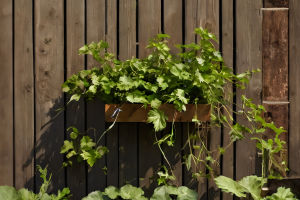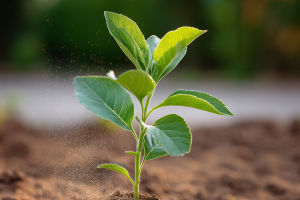Hey Lykkers! If you're diving into the world of plants, you've probably heard of annuals and perennials. But there's a fascinating group right in the middle—biennials.
These are the quiet achievers of the plant kingdom. They take two years to complete their life journey, and in that second year, they often surprise you with some of the most striking blooms or useful crops.
In this guide, we're exploring the unique rhythm of biennials—how they grow, what makes them tick, and how you can enjoy their two-part performance in your garden. Whether you're planning a veggie patch or a flower border, understanding biennials will help you work with nature's timing instead of against it.
What Are Biennials and How Do They Grow?
Let's ease into it by getting familiar with the life cycle of biennials and what makes them different from the rest.
Year One: Laying Down Roots
In their first year, biennial plants focus on setting a strong foundation. You'll notice they sprout leaves—usually forming a neat rosette close to the ground. While it might seem like nothing special is happening, there's a lot going on under the surface. This is when your plant is all about root development, storing energy, and getting ready for a bigger show.
If you've ever grown parsley or foxglove, you might've noticed that nothing much happens the first year. But don't lose hope! With a bit of patience and some care—regular watering, a bit of mulch, and protecting them from cold snaps—you're setting the stage for something beautiful.
Year Two: Bloom, Seed, and Farewell
Once the second spring arrives, your biennial is ready for action. You'll see it shoot up tall stems, form buds, and bloom—often with big, bold flowers that attract pollinators. Some, like hollyhocks, can reach impressive heights and add drama to your garden. Others, like carrots or beets, flower in year two if not harvested early.
After blooming and producing seeds, the plant completes its cycle and fades out. That's why knowing they're biennial helps you plan ahead—you won't be disappointed when they disappear, because that's exactly what they're supposed to do!
How to Use Biennials in Your Garden
Now that you know how they work, let's look at how you can enjoy growing biennials and make the most of their timing.
Choosing and Planting Biennials
You don't have to be an expert to include biennials in your garden. Try starting with familiar types like parsley, celery, sweet William, foxglove, or wallflowers. Start them from seeds in spring or late summer, depending on your local climate. You can sow them directly into garden beds, or begin them indoors and transplant once they're strong enough.
Be sure to label them clearly so you remember they're not going to bloom that first year. It's easy to mistake them for duds if you don't realize they're playing the long game. You'll also want to plant in spots where they can sit quietly for a season without needing to be moved.
Design and Pairing Ideas
Because biennials have that delayed payoff, it helps to pair them with annuals or perennials to keep your garden lively all the time. For example, while your foxglove is growing its leaves in year one, surround it with fast-growing flowers like marigolds or cosmos.
In vegetable gardens, this works too. You can plant carrots in one row for harvesting and let a few beets go to seed the next year for collecting your own seed stock or for their showy blooms. This type of planning helps create a dynamic, rotating garden that feels full and thoughtful year-round.
Lykkers, biennials, are like the patient performers of the plant world. They quietly grow one year, then come back the next with beauty, utility, or both—and then bow out gracefully. By understanding their two-season rhythm, you can plan a garden that surprises and delights you across seasons.
Whether you're in it for the flowers, the food, or just the fun of trying something new, biennials offer a refreshing pace. Give them a little space and time, and they'll reward you with a show worth the wait.


